20 Best Places to Visit Granada Spain 2020 - Granada is the spirit of Andalusia, a position of amazing excellence at the foot of the Sierra Nevada Mountains. This mysterious city was the capital of a Moorish kingdom from the thirteenth until the fifteenth hundreds of years. To the Moors, who landed from North Africa, the rich setting of Granada resembled paradise on earth. The Nasrid Dynasty reigned with wonder not at all like anyplace in the medieval world.
The ridge fortification of the Alhambra Palace was a haven of greenery, rose patio nurseries, and unendingly streaming wellsprings. In the wake of prospering for quite a long time, Granada turned into the last bastion of the Moors in Spain when the Catholic Monarchs caught the city in 1491. Albeit now dominatingly Christian, Granada has acquired rich Islamic, Jewish, and Gypsy impacts. The Renaissance Catholic house of God was at one time a mosque. The Albaicín (old Moorish town) and the Alcaicería (zest showcase) have a valid Arabic flavor. Bright Gypsy culture and astounding flamenco moving are found in the caverns of the Sacromonte quarter.
The ridge fortification of the Alhambra Palace was a haven of greenery, rose patio nurseries, and unendingly streaming wellsprings. In the wake of prospering for quite a long time, Granada turned into the last bastion of the Moors in Spain when the Catholic Monarchs caught the city in 1491. Albeit now dominatingly Christian, Granada has acquired rich Islamic, Jewish, and Gypsy impacts. The Renaissance Catholic house of God was at one time a mosque. The Albaicín (old Moorish town) and the Alcaicería (zest showcase) have a valid Arabic flavor. Bright Gypsy culture and astounding flamenco moving are found in the caverns of the Sacromonte quarter.
Extra Info about Spain Tourism
Spain is honored with a mellow atmosphere, wonderful seaside shorelines, mountains and fields, and a long history that can be valued, in numerous regards, through the design perfect works of art found all through the land. Over this are energetic urban communities that welcome voyagers to wait. Barcelona, Madrid, and Seville each have their very own one of a kind appeal and surprisingly extraordinary locales. In the wide-open, residential communities like Ronda or Cuenca offer a slower pace and some startling beautiful enjoyments.
Other best sights that ought to be on Traveler's schedule when going through Spain are the Alhambra Palace in Granada, and the city of Cordoba with its pretty squares, whitewashed houses, and the well known La Mezquita-Catedral. Amid the mid-year months, sun searchers rush to the delightful wide stretch of shoreline at Malaga and other seaside resort towns. Those searching for something somewhat more curious and expelled from standard Spain can bounce a trip to the island of Majorca, where life is somewhat slower paced.
Barcelona is one of the nation's best goals and a place where a guest could without much of a stretch spend seven days. Sights flourish and the wonderful climate can be acknowledged from the curious squares and patios, or the open-air eateries and bistros. The city was sufficiently lucky to be picked by Antoni Gaudi as a canvas for his one of a kind engineering perfect works of art. His twentieth Century structures remain as a distinct difference to the regular beautiful old design found all through Spain. Gaudi's incomplete house of prayer of Sagrada Família is the city's most renowned site, however, the Parc Güell is additionally an absolute necessity see, offering a look into the fabulous creative ability of this man. For general people viewing, unwinding, or feasting, Las Ramblas is the primary visitor problem area in the city, where there is continually something going on.
Madrid, the capital city, is somewhere else where you could invest a lot of energy. It is home to the nation's best exhibition halls, huge numbers of which are globally famous, including the Prado Museum. The Royal Palace, the Real Monasterio de las Descalzas Reales, and the extensive Plaza Mayor, fixed with open-air eateries and frequented by performers of various types, are a portion of the key sights. Outside the city, the sixteenth C Royal Monastery and Palace of the Escorial are likewise worth a side outing. Contingent upon the length time accessible guests may likewise need to complete a multi-day excursion to see the old walled city of Toledo, a UNESCO World Heritage Site.
Explorers making a beeline for Seville will discover a portion of the restricted roads and little courts a change from the open avenues and extensive squares of Madrid. The city has to a greater extent a residential area feel and is to some degree more loose than Madrid or Barcelona. The enormous Gothic Cathedral is the standard fascination, trailed by the fourteenth C Alcazar and the Museum of Fine Art.
1. Sierra Nevada
This national stop lies simply behind Granada's eastern rural areas and has both the most elevated top in Iberia (Mulhacén at 3,478m) and the southernmost ski resort in Europe. It will just take thirty minutes to get from the old focus of Granada Spain up to these grand mountainscapes.
2. Alhambra: A Masterpiece of Islamic Architecture
The Alhambra stands magnificently on a sustained ridge with the snow-topped Sierra Nevada Mountains as a background. This UNESCO-recorded World Heritage Site is the fundamental motivation to visit Granada Spain and is a flat out must-see fascination. The Alhambra was the living arrangement of the Moorish leaders of the Nasrid Dynasty for 250 magnificent years, from the thirteenth to the fifteenth hundreds of years, and is a veritable exhibition hall of Islamic design. Encompassed by antiquated dividers, the Alhambra shows up from a far distance to be an invulnerable fortification. This site was the last fortress of the Moors in Spain.
The Alhambra complex comprises four gatherings of structures in precisely finished grounds. The Alcazaba is the first thirteenth-century Moorish stronghold, the most established piece of the Alhambra. All that remaining parts of the Alcazaba are the bulwarks and the towers. The Nasrid Palaces are the most awesome structures of the complex, with sublime facilities and open spaces utilized by the Sultans of the Nasrid Dynasty. Run of the mill of common Moorish structures, the Nasrid Palaces are plain on the outside, however, lavish on the inside, with beautiful tile work and tranquil yards. The Palace of Charles V was worked in the sixteenth century after the success of the Moors and was utilized by the Spanish head as his mid-year royal residence. Make certain to enable time to investigate the Generalife, particularly the perfect Moorish greenery enclosures loaded up with obscure yards, wellsprings, fragrant roses, and blossom enhanced porches ignoring the spots of the Alhambra and the mountains.
To spare time remaining in long queues at the royal residence entrance - particularly on hot days - consider acquiring a Skip the Line: Alhambra and Generalife Gardens Half-Day Tour. This incredible esteem ticket incorporates helpful pickup and drop-off from midway found inns; need get to; and an instructive 2.5-hour strolling voyage through Alcazaba Fortress, the Palace of Charles V, and the Nasrid Palaces.
3. Charles V Palace
Begun in 1527 and surrendered, incomplete, in 1637, this monumental structure had uncommon essentialness for Charles V, whose grandparents Ferdinand and Isabella twisted Granada from the Moorish guideline in 1492. It was somewhat as a tribute to them – and furthermore to set up an illustrious habitation in Granada – that Charles requested the development of this Roman-style castle; a notice of Catholic amazingness wedged in the midst of the remaining parts of an incredible Moorish administration. The most astounding corridor of its excellent, round patio was done in 1619, yet the rooftop was never included; remaining in its inside, you turn straight upward into the profound, hard blue of an Andalusian sky. These days, the Charles V Palace is home to one more of the city's key attractions, Granada's Museum of Fine Arts, which can be visited for nothing.
4. Gallery of Fine Arts
Granada's driving craftsmanship exhibition hall for great works houses more than 2,000 pieces, including various vital religious artworks and models dating from the sixteenth century onwards. Like the royal residence itself, this gathering fills in as a notice of the Catholic triumph of Granada, and of progressive Catholic rulers' endeavors to stamp their very own religion and personality on what had been A Moorish area for around eight hundred years. The historical center likewise has various works by neighborhood craftsman Alonzo Cano, additionally a modeler who planned the façade of Granada's house of God.
5. Carmen de los Martires Gardens
In case you're at the highest point of the slope to visit the Alhambra, don't return down without first meandering around the Carmen de los Martires Gardens, one of the city's most alluring green spaces. Since the dominant part of guests set out straight toward the Alhambra, this exquisite safe house of flowerbeds, little lakes and verdant ways is just at any point meagerly populated with visitors. In spring and summer, its shaded walkways give a haven from the ground-breaking sun, and its perspectives of the scene past Granada Spain give a feeling of the room that can be inadequate in the confined downtown area. A fantasy tower sits amidst this verdant desert spring; move up its little winding staircase and review the greenery enclosures and Granada from the city's most sentimental perspective.
6. Generalife
The rich grounds of the Alhambra are huge to the point that you may even need one more day to see them. These rich and stately gardens are particularly fragrant in springtime and have beautiful flowerbeds, flawlessly trimmed fences and topiaries, geometric pools and wellsprings and a wide range of astonishing compositional twists.
The life-changing part, however, is the Generalife Palace, which is at the peak of the slope where the Emirs would spend their summers in the shade. The wellsprings here would cool the air as their waters vanished on the yard's clearing stones.
7. Granada Charterhouse
You can get the transport to get to this sumptuous religious community only north of Albayzín or set off on a 20-minute stroll through the city's clamoring back roads. Development started toward the beginning of the 1500s, directly after the city was recovered, however, wouldn't be finished for an additional 300 years.
8. Albaicín and Mirador of San Nicolas
A champion among the most charming exercises in Granada is to end up stirring up in the slant neighborhood of the Albaicín, an UNESCO-recorded World Heritage Site. The Albaicín, Granada's prominent Arab quarter, was once incorporated by mindful dividers, and its wonderful little ways and whitewashed houses still reveal the barometrical Moorish character. From Puerta Nueva (Puerta de los Estandartes), an inside and out spared stretch of the town's old ramparts runs west to the Puerta Monaita. The best viewpoint of the dividers is from the Cuesta de la Alhacaba, near the ninth-century Puerta de Elvira, when the town's fundamental door. Various spots in the Albaicín offer stunning outlooks onto the Alhambra Palace, which is separated from the Albaicín by the shocking gulch of the Río Darro.
9. Carrera del Darro
Underneath the Albayzín locale is this road that follows the course of the little river Darro as it moves through the city where the old dividers would have been. It's a standout amongst the most sentimental strolls, in Granada as well as the whole nation.
10. Capilla Real
The significance of Spain's Catholic Monarchs is best seen at the Capilla Real (Royal Chapel), which houses the magnificent tombs. This incredible 47-meter-high domed church is attached to the Catedral Santa María de la Encarnación anyway has an alternate way; it was a development to the place of supplication. Within features amazing sixteenth century recolored glass windows and seven immense outlines by Alonso Cano. An excessively made grille by Bartolomé de Jaén encases the luxuriously enhanced renowned tombs. To the benefit is the Tomb of Ferdinand and Isabella in a milestone of Carrara marble made by craftsman Domenico Fancelli of Florence. The tomb houses stone coffins of various rulers and sovereigns. To the other side is the tomb of Philip the Handsome and Joan the Mad by Bartolomé Ordóñez. An enormous magnificently cut retablo behind the majestic tombs features statues of the Catholic Monarchs by Diego de Siloé. In the transepts are extravagantly planned relicarios (side conciliatory tables) by Alonso de Mena. The north transept demonstrates the outstanding Triptych of the Passion by Dieric Bouts.
An element of the Capilla Real is the sacristy, a fortune trove of the masterpiece, including Botticelli's Christ on the Mount of Olive's painting, Rogier van der Weyden's Pietà, and Hans Memling's Descent from the Cross. The amassing also demonstrates polychrome wood figures of the Catholic Monarchs in an appeal to by Felipe Vigarny; King Ferdinand's sword; Queen Isabella's crown; and a supplication book, which had a place with the Catholic Monarchs.
11. Catedral Santa María de la Encarnación
To locate the best Renaissance church in Spain, visit Granada's Cathedral of Santa María de la Encarnación near the Plaza Nueva. The place of the petition was worked by Queen Isabella as a milestone to the triumph of Christian Spain over the Moors. It stays on the site of a past mosque. Begun in Gothic style in 1523 and continued in Plateresque style from 1525, the place of God was purified in 1561 while still fragmented. The sixteenth-century west outside features a tremendous help by José Risueño over the crucial gateway. The northwest side of the place of supplication is similarly richly completed with dazzling models. On the entry, bend segments are statues of the Catholic Monarchs and bronze statues of the Apostles.
12. The Gypsy Quarter of Sacromonte
Granada's distinctive Gypsy quarter on the Sacromonte is an intriguing spot to visit. This pinnacle neighborhood begins around the Cuesta del Chapiz, where the Camino del Sacromonte rises the incline. The Gypsies (Gitanos) have had a closeness in Granada since 1532 and settled in the caves of Sacromonte in the eighteenth century. Wander the slant roads of this air neighborhood to locate the breathtaking Gypsy homes; some are improved with dynamic superb ceramic creation. Breakdown the upper domain of the Camino del Sacromonte are in the best condition, and one has been made into a verifiable focus so you can see inside. Voyagers can find many lock settings in Sacromonte where flamenco is performed, including Cueva de la Rocio, whose outstanding guests have consolidated the King of Spain, Bill Clinton, and Michelle Obama.
13. The Bañuelo: Traditional Arab Baths
The Moors brought the custom of the hammam (Arab Baths) from their nation in North Africa to Andalusia, and Granada's eleventh century Bañuelo are among the most settled and best shielded in Spain. One of just a bunch couple of shower buildings not demolished after the Reconquista by the Catholic rulers, who considered the showers bold, they are one of Granada's most prepared surviving Moorish districts. Today, visitors can test a practically identical trial to the Moorish showers at the Hammam Al Andalus close Plaza Nueva. Regardless of the way that it is on the site of an interesting Moorish shower house and created in the genuine style with spry bends and decision Islamic-style tile work, this hammam is an as of late manufactured proliferation.
14. Parque de las Ciencias (Science Park)
Families running with young children may need to take a break from Spain's significant marvels to visit a place where kids can explore the supernatural occurrences of science. This extensive science disclosure perplexing, around a 15-minute walk around within, fuses a Macroscopic Pavilion that explores the Human Body, the Techno-Forum Pavilion that breaks down new headways, and a couple of various structures with demonstrates that join such youngster pleasers as a Tunnel of Infinity, where their appearance is expanded into immensity. There's a planetarium that adventures 7,000 stars, a tropical butterfly develop, and outside show areas that research plant science, mechanics, perception, essentialness, and anything is possible from that point.
15. La Alcaicería (Arab Spice Market)
This standard Arab souk is an amusement of the old Moorish market that existed here before the fire in 1843 squashed the region. Close to the place of the petition, the Alcaicería continues running on the Calle de la Alcaicería from the Plaza Alonso Cano. The entire neighborhood of the Alcaicería, a maze of tight lanes, when held the silk and flavors grandstand. The present Alcaicería audits the main souk and is a most adored place for token shopping in Granada. Close-by is Plaza Bib Rambla, a broad open square that overflows with people and development. A stylish wellspring stays at the point of convergence of the square enveloped by breathing life into ironwork and splendid sprout stands
16. The sixteenth-century Monasterio de la Cartuja
This quiet sixteenth-century religious network is on the edges of Granada, around a little route from the center (one kilometer north of the Plaza del Triunfo). The Monasterio de la Cartuja, generally called the Monasterio de la Nuestra Señora de la Asunción, had a place with the Carthusian ask for that was built up in France in the eleventh century. Behind the fundamental outside and porch is an amazingly luxurious inside. The group's lavishly lit up chapel is a champion among the most liberal religious structures in Spain. The seventeenth-century Baroque shelter leaves visitors awestruck with its extraordinary introduction of extravagant representations, marble statues, plated purposes of intrigue, and important conciliatory table pieces. The most striking segment of the assemblage is the sacristy, arranged by Luis de Arévalo, with a swarm of grow stucco ornamentation and marble pilasters. The refectory demonstrates a portrayal of the Last Supper by Fray Juan Sanchez Cotán.
17. Basilica St. John de Dios
Amidst the stunning medieval Islamic craftsmanship and configuration, Granada's cunning perfection of Baroque frequently goes unnoticed. For submersion into a fantasy of expanding cutting and shocking gold, advance into the Basilica St. John Dios. Gold covers the unusual carvings on the rooftop, dividers, and side-heavenly places and edges the earth-shattering works of art. A sound guide in English is consolidated with the affirmation charge, raising inconspicuous components you may somehow miss. If it isn't obvious, ask for access to the upper level behind the conciliatory stone for a view down into the assembly.
18. Overall Festival of Music and Dance
The scrutinizing tunes of Gypsy guitar and showy flamenco enchant swarms who go to this world-class festivity. Held in the midst of June and July at eminent settings, for the most part, paramount milestones all through Granada, the music and move festivity displays the city's rich social inheritance. The verifiable scenery of the festival returns to 1883 when demonstrates were held at King Carlos V Palace. The festival continues with the custom with its showing of grouped Spanish melodic styles and characterizations, for instance, melodic show, zarzuelas, and flamenco. Shows performed by huge group ensembles are held at King Carlos V Palace. Move and expressive move displays are held at the Generalife Gardens outside theater, and music introductions occur at El Patio de los Arrayanes in the Alhambra. Morning demonstrates are held in a bit of Granada's essential houses of prayer and structures. Night flamenco shows and world music are performed at various scenes in the Albaicín and Sacromonte neighborhoods. The festival attracts an overabundance of 30,000 people reliably.
19. Corral del Carbón
The most settled remaining milestone created in the midst of the Nasrid organization, the Corral del Carbón was a stockroom and refuge for shippers, worked amid the 1200s.
Like the Arab showers, the structure is permitted to general society. In its day was the place traders who had made an excursion from a remote place to the nearby by Alcaiceria could store their items and rest for the night.
20. Religious Events and Festivals
By far most of Granada's religious festivals started in the midst of the Renaissance after the Reconquest. On January second, Granada watches Conquest Day with a religious motorcade perceiving the triumph of Granada by the Catholic Monarchs (Queen Isabella and King Ferdinand) in 1491. The Three Wizards Parade on January fifth features a various organization of camels, horse and carriages, and jamboree characters in a vivacious procession through the city. February initially is the Pilgrimage of the Patron Saint Cecilio in the Sacromonte neighborhood at the Abbey of Saint Cecilio, with religious events, music, movement, and brilliant nearby sustenances.



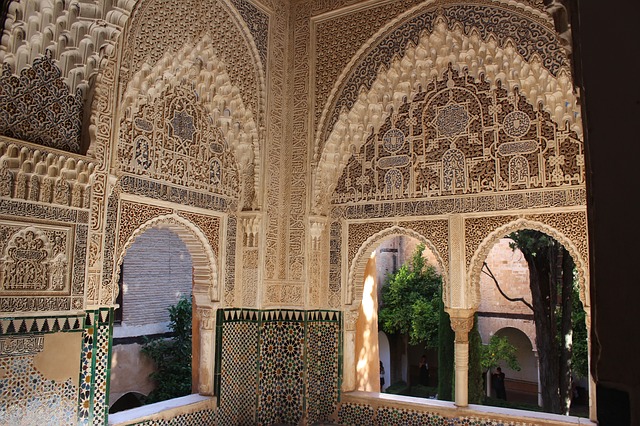
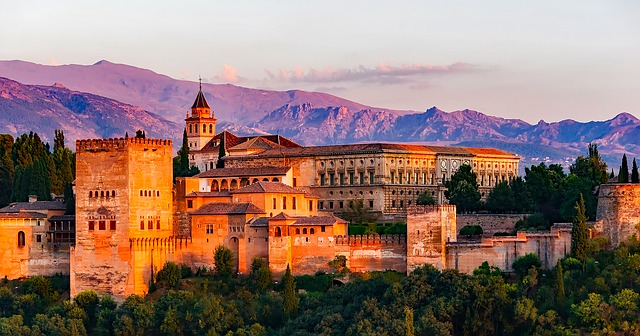
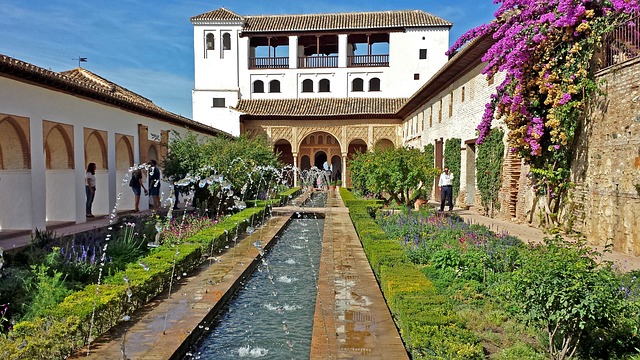
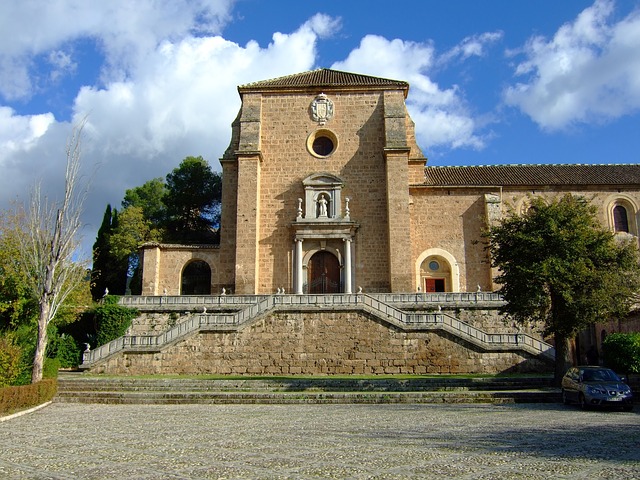
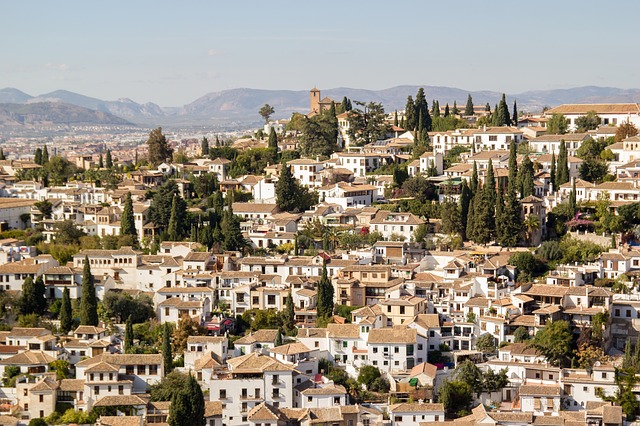


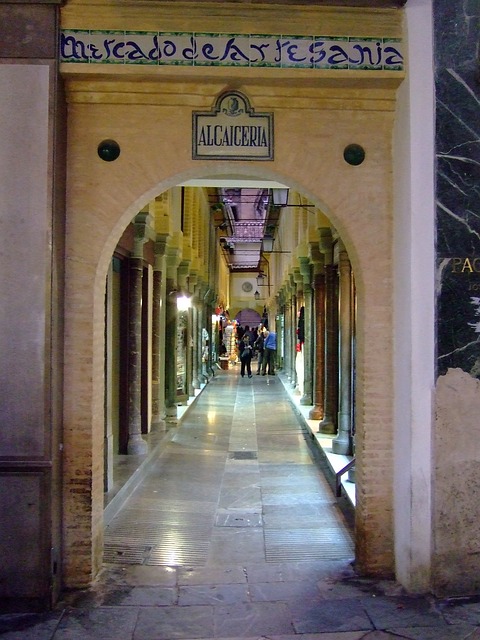













No comments:
Post a Comment
Add Your Thoughts here...!